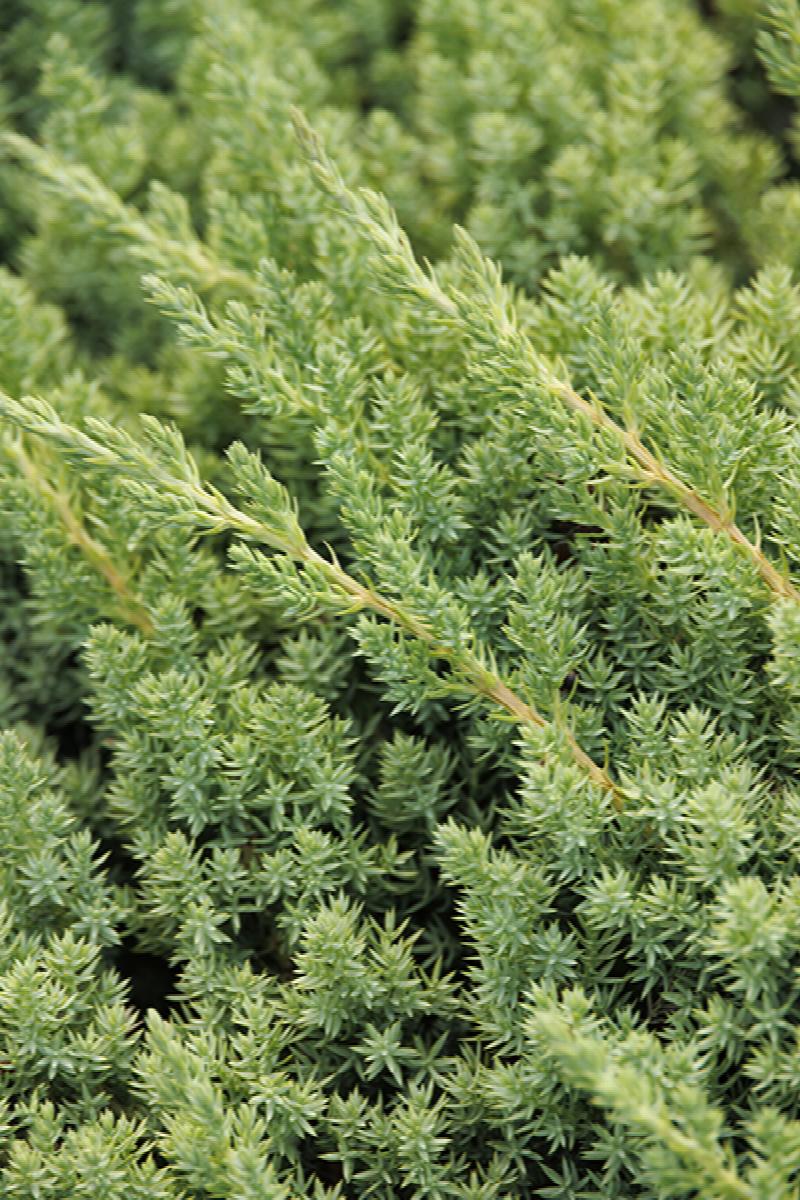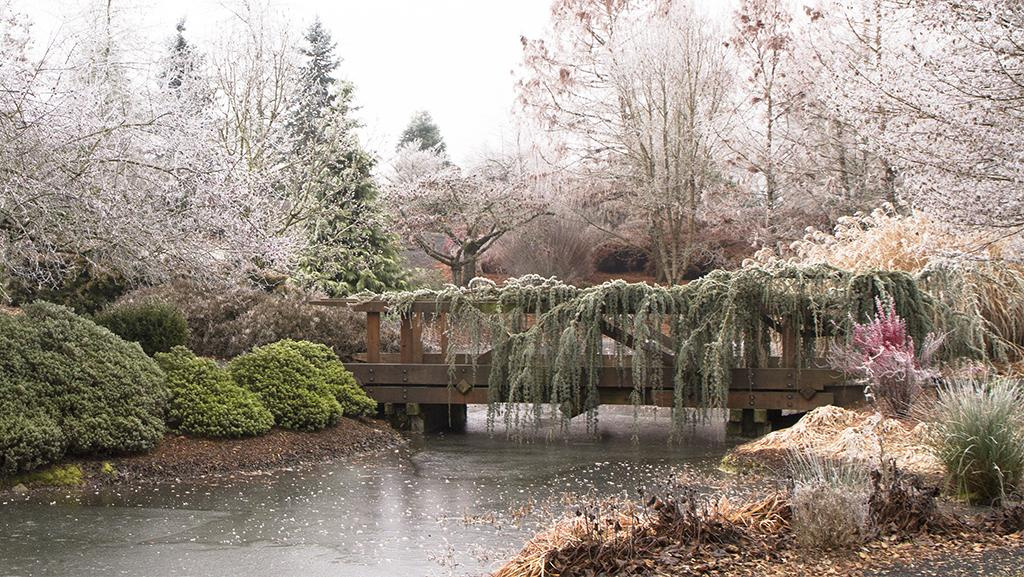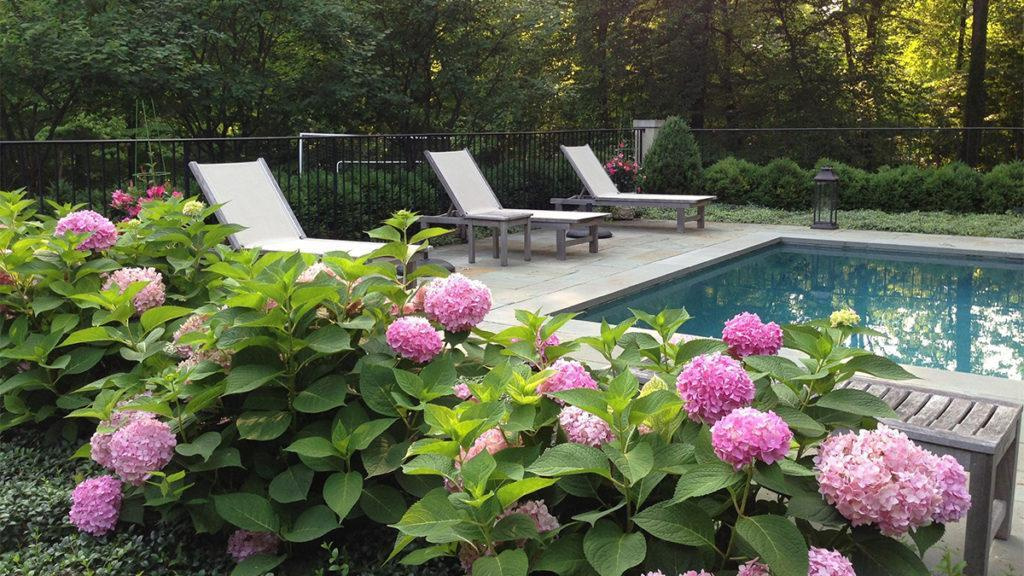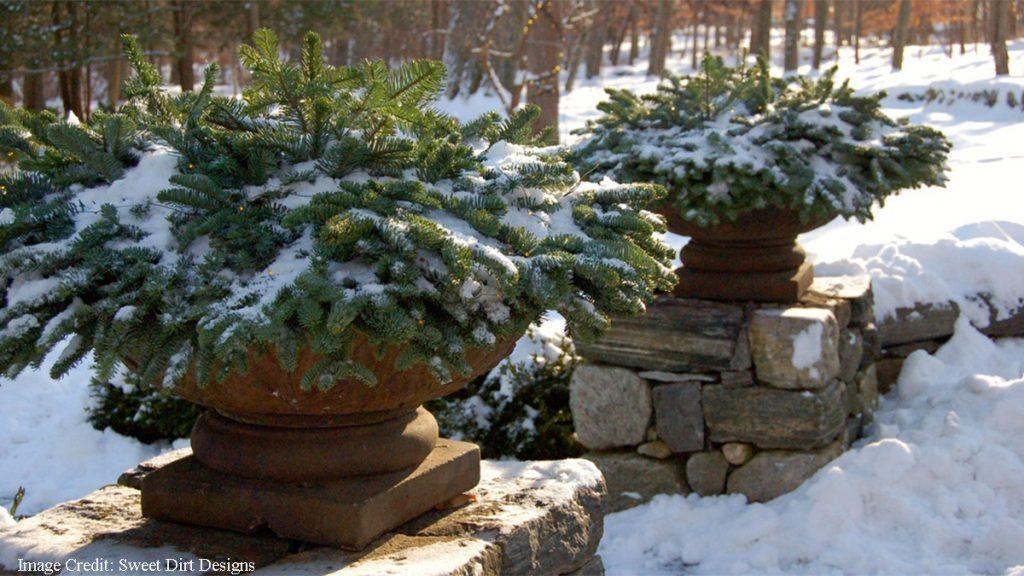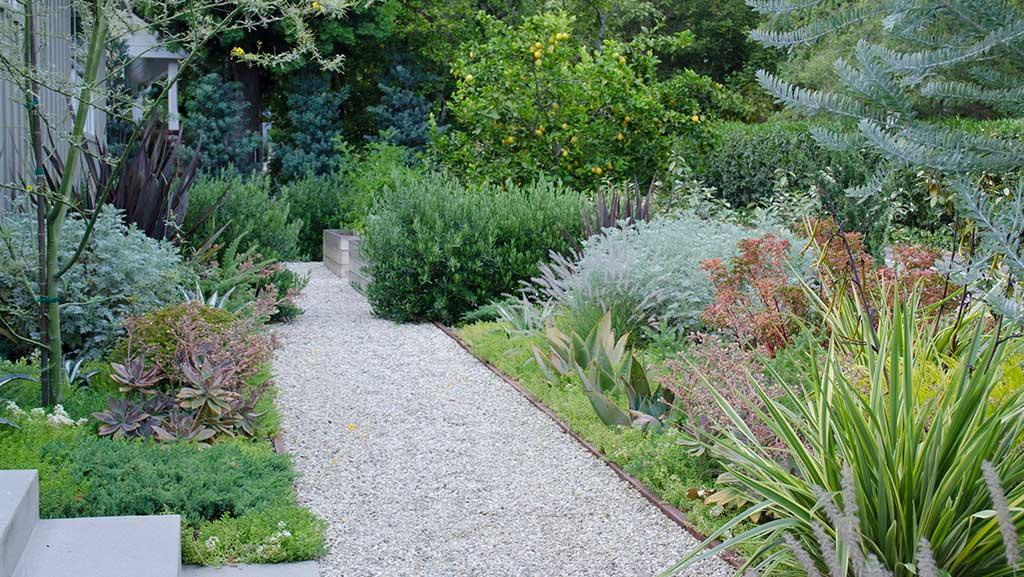Dwarf Japanese Garden Juniper
Juniperus procumbens 'Nana'
| Description | A dense mound of ground-hugging branches that radiate from the center. Bright green new growth turns a handsome blue-green as it matures. Winter color has a purple tinge. A wonderful evergreen for a group planting on a rocky slope, or trained into an upright staked specimen. Foliage and form is superb when left unpruned. |
|---|---|
| Light | Full sun, Partial sun |
| Watering | Water when top 2 inches of soil is dry. |
| Blooms | Conifer; prized for foliage. |
| Mature Size | Grows 1 ft. tall, 6 ft. wide, in natural form; 2 to 4 ft. tall in staked form. |
| Deciduous/Evergreen | Evergreen |
|---|---|
| Special Features | Easy Care, Improved Pest and Disease Resistance, Waterwise, Compact Form |
| Problems/Solutions | Coastal Exposure, Deer Resistant, Erosion Control, Rabbit Resistant |
| Growth Rate | Moderate |
| Landscape Use | Border, Container, Ground Cover, Suitable for Topiary, Hillside |
|---|---|
| Design Ideas | This is probably the best bonsai-style Juniper for Asian gardens or for small topiary. Super tight foliage and lovely blue-green tint makes a neat mound. Perfect with rocks and in rock gardens or around natural rocky water features. Because it is available in so many preshaped forms, you can choose one for a formal setting, another for true bonsai and a third for a courtyard specimen with multiple branches. Highly recommended for tiny city gardens; if there's room for only one Juniper, let it be this one. |
| Foliage Color | Blue-green |
| Companion Plants | Rose (Rosa); Heavenly Bamboo (Nandina); Catmint (Nepeta); Russian Sage (Perovskia); Barberry (Berberis); Maiden Grass (Miscanthus) |
| Care | Easily grown in sandy soils on the dry side; adaptable to a wide range of well-drained soils. Water deeply, regularly during first growing season to establish an extensive root system; reduce frequency once established. Apply fertilizer before new growth begins in spring. Prune topiary forms regularly to maintain shape and size. |
|---|
This Plant's Growing Zones: 4-9
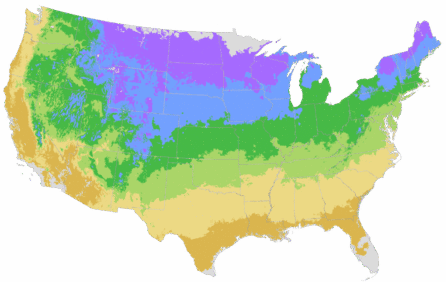
Your USDA Cold Hardiness Zone: 9
Good to grow!
Buy Online
Your plant(s) will ship to the garden center you choose as soon as they meet our quality standards and the garden center schedules a shipment. This can be as little as 21 days, but may take longer depending on the plant growth and your garden center's scheduled shipments.
Please note, not all garden centers participate as delivery locations for online orders.
Buy Locally
This plant may be available in these stores:
Due to the seasonal nature of plants, availability at your local garden center is not guaranteed. Give them a call before visiting. Please note, not all garden centers participate as delivery locations for online orders.
-
Drake's 7 Dees Nursery 16519 S.e. Stark St.
Portland, Oregon 97233 -
Lowe's 18801 Se Mill Plain Blvd.
Vancouver, Washington 98683 -
Portland Nursery 9000 S.E. Division St
Portland, Oregon 97266
About Us
We have been pioneers and craftsmen in the art of growing plants for nearly
100 years. Since our founding in Southern California by Harry E. Rosedale, Sr.
in 1926, we have been absolutely dedicated and obsessed with quality.
We have been pioneers and craftsmen in the art of growing plants for nearly 100 years. Since our founding in Southern California by Harry E. Rosedale, Sr. in 1926, we have been absolutely dedicated and obsessed with quality.
